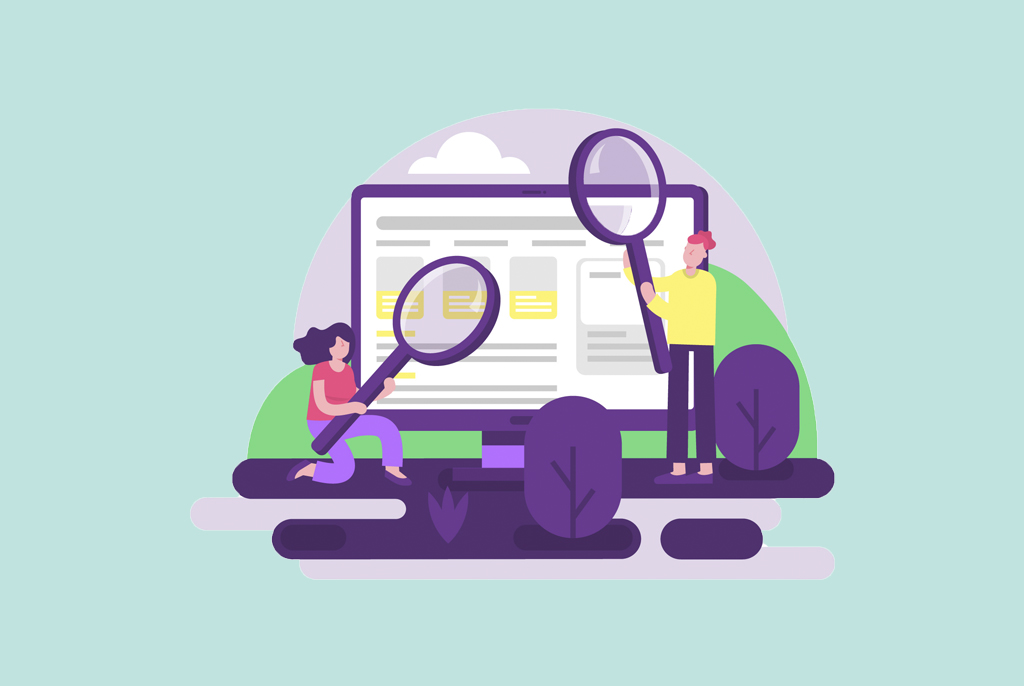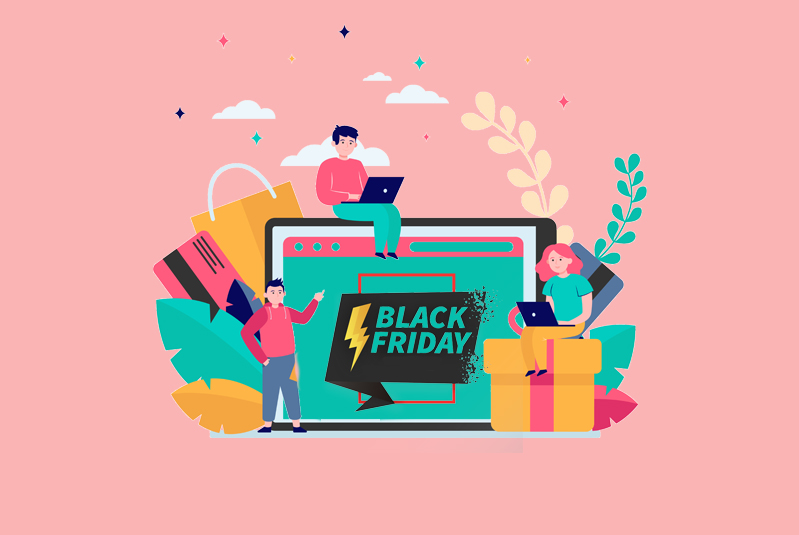How to Personalize Your Marketing Strategy with Behavioral Targeting

Targeting is the lifeblood of effective lifecycle marketing. The problem lies in finding the target audience and admittedly, it can be a challenging process.
Historically, marketers overcame this problem by showing ads to the mass market, which can be as effective as trying to hit a tiny nail with a wrecking ball and in some cases, marketers buy lists of people that fit a certain demographic. Both tactics can be costly and ineffective.
However, online marketing provides marketers with a tactic that can help them overcome this problem. That tactic is behavioral targeting.
In this post, I explain the power of behavioral targeting and share five behaviors you can target and how to implement them across marketing channels.
What is behavioral targeting?
Behavioral targeting is a technique marketers and advertisers use to segment audiences based on users’ behaviors. Marketers create user profiles of individual consumers based on the behavioral information taken from:
- Web analytics tools
- Applications and cookies
- Browsing and search history
- IP addresses
The information advertisers take from these sources allows them to target their ads to each person’s needs and interests based on specific behaviors, such as:
- The number of visits they have made to a site
- What products they have bought
- What categories they prefer
- If they are registered as a member
The behavioral patterns described above can help marketers offer unique browsing and shopping, which provides many benefits to both to users and marketers alike.
Benefits of using behavioral targeting
We live in a world where consumers are used to getting bombarded by ads all the time. This creates a double-sided problem: while brands try all sort of strategies to reach out to people and make them interested in their ads, consumers may try to avoid brands and their ads as much as possible. Researchers call the process in which consumers avoid ads by all means “banner blindness.” People psychologically blind themselves to any ad that seems pushy or overly promoting.
The situation is illogical as companies provide products and services people want and need. If it weren’t for the revenue companies get from their customers, the former wouldn’t exist. An effective way to overcome this challenge is to use behavioral targeting.
Behavioral targeting serves ads to consumers who are more likely to find them relevant based on their actions they take. There’s little guessing involved; companies can derive certain attributes from those people based on their past actions. As a result, behavioral targeting allows marketers to serve ads that have:
- Higher relevancy
- Higher engagement
- Higher CTR
- Lower CPC and CPA
- Higher ROI
Behavior targeting provides an additional benefit to marketers, one that affects the way consumers see themselves.
In 2016, a group of researchers decided to understand the reason why behavioral targeting works so well compared to traditional demographic or psychographic targeting. They ran three tests. In the first study, researchers found participants were more interested in buying a Groupon for a restaurant advertised as sophisticated when they thought the ad had been targeted to them based on specific websites they had visited during an earlier task compared to when they thought the ad was targeted based on demographics or not targeted at all.
Then, they exposed participants to an ad that they believed to be either behaviorally targeted or non-targeted for a high-end watch brand. When asked to rate how sophisticated they perceived themselves to be, the participants evaluated themselves as more sophisticated after receiving an ad thought to be individually targeted to them, compared to when they thought the same ad was not targeted.
Finally, the researchers showed participants a behaviorally targeted ad for an environmentally friendly product. Soon afterward, the participants rated themselves as more “green” and were more willing to buy the advertised product and to donate to a pro-environmental charity.
In other words, the behaviorally targeted ads worked because it changed how consumers saw themselves and made them feel like they already had traits implied by the ads. This can have deep implications in the way marketers serve their ads to consumers.
Imagine for a moment you work for a company which sells running gear and you find a group of people interested in running because they have visited many running sites (including blogs and shops) in the past few days. Based on this data, you assume those people like running. This may not be the exact case, as many of these people may just be interested in getting started. Since you can’t know that for sure, you end up serving the ads to that audience and assume they all run. Let’s imagine the ad you used showed a group of people running and a title that say “Hit those 10k”. After the consumers see your ad, some of them may end up thinking “that company thinks I am a runner, even though I’m not. That means I actually could be a runner, and I should actually start running to prove that new better identity”. The whole process ends up with many of the hit consumers buying your shoes.
This example shows the powerful implications of behavioral targeting in improving your marketing messages.
It’s still important to mention the studies above weren’t exhaustive and there are still a lot of further research to do. Still, the studies show how powerful can behavioral targeting be to influence the psychological identity of consumers.
Behaviors you can personalize for
So far, you have seen what behavioral targeting is and how it benefits advertisers. Now it’s time to focus on the different ways you can segment people using behavioral targeting.
1. Geolocation
You can extract the geolocation of your visitors with a good level of accuracy. Geolocation can be done at the continental, country, regional or city level. You can even geolocate your visitors up to the point of knowing if the customer is accessing the site from a building associated with a large company.
According to a study carried out by Verve Mobile, geo-targeted mobile ads performed over 50% better than the non-targeted campaigns.
You can use the geolocation information to present information based on the weather a particular region or city at a certain time of the year. For example, if you sell clothing and one of your visitors comes from Canada in December, you can guess that person is looking for clothing to combat the cold. Therefore, you can show that visitor with relevant clothes. On the other hand, if one of your visitors comes from Hawaii, you can offer warmer clothes.
On creates geo-based running maps to make running more fun and exciting for their subscribers. They create running maps for cities like New York, Berlin, Paris, and Zurich, which they call “Explore the City.” These maps inspire runners to discover new cities and make them their running playground. Each map has a nice illustration and shows cafes and sightseeing recommendations. Subscribers can download these maps and when they do so, they enter their email address, which automatically triggers an email with a downloadable running map.
2. Device used
The device from which a visitor accesses a site considerably influences the way they interact with the site. Someone who visits a website from their desktop can behave differently than someone who accesses it from their iPad or iPhone. Making an offer that’s suited for the device from which that visitor accesses the site can help improve the way the offer is shown.
For example, you can show one pop-up for desktop visitors that includes more text explaining the benefits of signing up to your list, while you can show one for mobile devices that only shows the headline and the form.
3. Traffic sources
Another way you can segment your visitors is by the traffic source in which they come to the site, including a search engine, a social site, a paid campaign, an email, or a referral site. You can use this information to match the visitor’s traffic source with your offer.
For example, if your visitor came from a social media site, you can show them a pop-up that entices them to share your article on social media. If your visitor comes from an email, it wouldn’t make sense to show them an email sign up form, so you could offer them an ebook or a discount to move the relationship closer to a sale.
4. Visit data
The behavior of a new visitor differs from a repeat visitor in one way: the repeat visitor already trusts you. Therefore, segmenting your visitors based on their visit data can help you target visitors who are more likely to purchase from you. At the same time, you can focus on other higher-value activities with repeat visitors, like showing your benefits, products, or services.
You can also segment visitors according to other attributes, such as:
- The type of content they visit
- The number of pages previously visited
- Products in their shopping cart
These attributes are a good opportunity to drive the visitor further along the funnel.
For example, you can show a discount to visitors who have visited a product page multiple times but haven’t added the product to cart. You can also show a chat box to visitors who have added a product to a cart but haven’t finished the purchase so they can ask any questions they may have.
5. Transactional data
Transactional data is probably the most powerful kind of segmentation you can use, especially if you work for an e-commerce business. Segmenting based on transactional behavior gives you access to a group of visitors who are profitable, interested in your company, and likely to share your products with their friends.
You can use transactional segmentation in many different ways, including:
- Number of purchases
- Average order value
- Category of product bought
- Number of products purchased
- Time-to-purchase
You can play with these transactional attributes until you get a specific group of customers that’s most relevant to you. For example, you can send more higher-intent offers to those visitors who have a high average order value and a low time-to-purchase. You can also send related products to the category they tend to shop, or more expensive products to those that buy low priced ones.
Segmenting your non-purchasing visitors can be useful as well if you pair it with other types of segmentation. For example, you can target non-purchasing visitors with those that have visited one of your product pages more than five times, and offer them a discount to trigger the purchase.
You can also focus your behavioral targeting towards increasing the loyalty of visitors who have already purchased from you. You can give them access to new products, offer related products to the one they bought, give them discounts, or even referral codes for them to share with their friends.
Pro TipThere’s no right way of segmenting people. You should always use what you have available and what works best for you. What works for one company can be ineffective for another. Finally, mixing the five behaviors can work even better than using each one alone.
Marketing channels + behavioral targeting = results
The process of implementing behavioral targeting in your marketing strategy takes the following two steps:
- Segment your visitors based on a specific behavioral profile you find useful and relevant for your marketing strategy.
- Define what actions you need to take for each profile to achieve your overall marketing goals.
For example, if you want to retain your customers, you can first create a profile that focuses on those who have purchased from you, who live in your target geographic location, and who came back to your site at least once in the past 30 days. Then, you can send them an offer that incentivizes them to make a purchase through one of the following channels available.
Pop-ups
Have you ever visited an e-commerce store which you liked and, just as you were to leave the site, a pop-up showed up offering you a “limited-time” offer? That was behavioral targeting. Marketers have discovered when they show an enticing offer to a visitor who is about to leave, those visitors tend to take the desired action.
The main benefit of using pop-ups is you can give immediate feedback to a specific behavior you want to influence. In the previous case, you nudged people to stay on the site by giving them something they may need to make the desired action (buy) and stop the undesired one (leave). You can also change a pop-up in little time, so you can get immediate results on your actions.
The problem with pop-ups is, as you have likely experienced, they can annoy your visitors. You can avoid this problem by setting your pop-ups so they don’t show up after certain days after it was first shown.
ZooShoo, an online shoe retailer that specializes in women’s fashion, increased their overall revenue 7.35% thanks to the use of behaviorally-targeted pop-ups. They also got over 5,000 email subscribers, 1,129 of whom ended up becoming customers.
Content
Behavioral targeting can allow marketers to change the content your visitors see. Even though it’s not possible to give each visitor a unique website experience (at least not yet), you can customize the website they see according to some basic behavioral parameters.
The most common type of behavioral targeting used with content is geo-location. Many e-commerce sites, like Ebay or Orbitz, automatically redirect their website location depending on where you are located.
Email marketing
A marketing channel where behavioral targeting can work best is email marketing. Despite the fact only 20% of marketers use behavioral triggers in email marketing, statistics show that behaviorally targeted emails (such as the ones based on transactional and trigger-based data) have an average open rate of around 50%.
David Daniels, the founder of the Relevancy Group, reported that targeting emails based on clickstream data increased open rates by more than 50%, and increased conversion rates by more than 350%.
Research from Gareth Herschel from Gartner found that event-triggered campaigns performed five times better than traditional email campaigns.
There are many emails you can send with the help of behavioral targeting. Here’s a list of examples you can use:
- Get a product review a few days after a customer purchases a product.
- Attract previous customers who haven’t purchased for more than 3 months but have visited the site in that same period.
- A welcome email for those visitors who sign up for your mailing list.
A Main Performance Hobbies, an online retailer of RC cars and drones, got a 90% email open rate and over 775% more conversions thanks to the use of email retargeting based on the people who left a product in their cart without finishing the purchase.
About Me

SAMEER KASMA
E-commerce & Digital Marketing Expert
Phone: +971-527805996
Email: kasmasamir@gmail.com
SEARCH
CATEGORIES
RECENT POST
 A Quick Guide for Google’s SEO Experience Update 2021SAMEER KASMA - 02 November
A Quick Guide for Google’s SEO Experience Update 2021SAMEER KASMA - 02 November Perfect Facebook Ads Funnel for Your BusinessSAMEER KASMA - 05 October
Perfect Facebook Ads Funnel for Your BusinessSAMEER KASMA - 05 October How to Setup YouTube 6 Seconds Bumper AdsSAMEER KASMA - 09 September
How to Setup YouTube 6 Seconds Bumper AdsSAMEER KASMA - 09 September How to Set Your Ecommerce Store for Black FridaySAMEER KASMA - 16 November
How to Set Your Ecommerce Store for Black FridaySAMEER KASMA - 16 November 15 Rules for Successful Email MarketingSAMEER KASMA - 17 September
15 Rules for Successful Email MarketingSAMEER KASMA - 17 September
ARCHIVES
- November 2021
- October 2021
- September 2021
- November 2020
- September 2020
- August 2020
- July 2020
- June 2020
- May 2020
- April 2020
- March 2020
- February 2020
- January 2020
- December 2019
- November 2019
- July 2019
- February 2019
- January 2019
- December 2018
- May 2018
- April 2018
- March 2018
- January 2018
- December 2017
- October 2017
- September 2017
- August 2017
- July 2017


